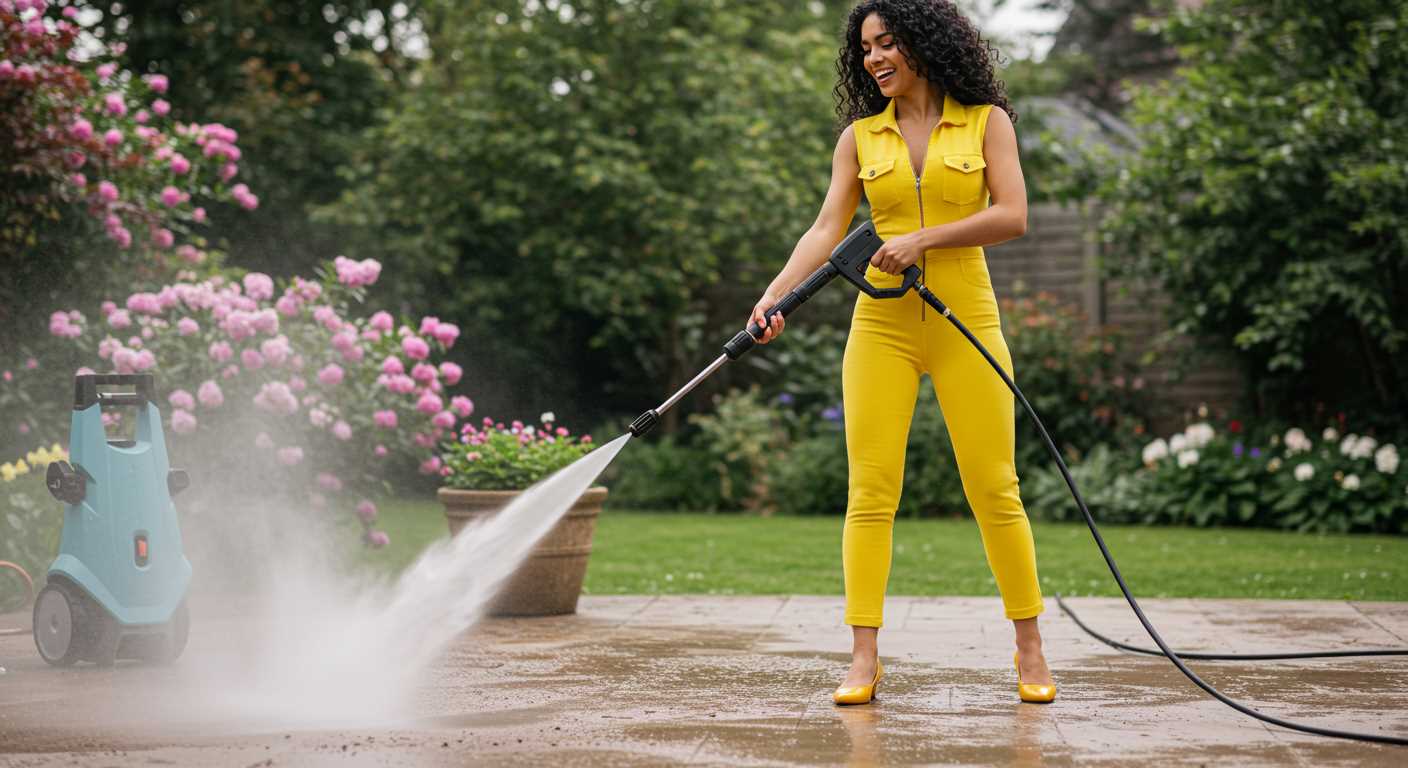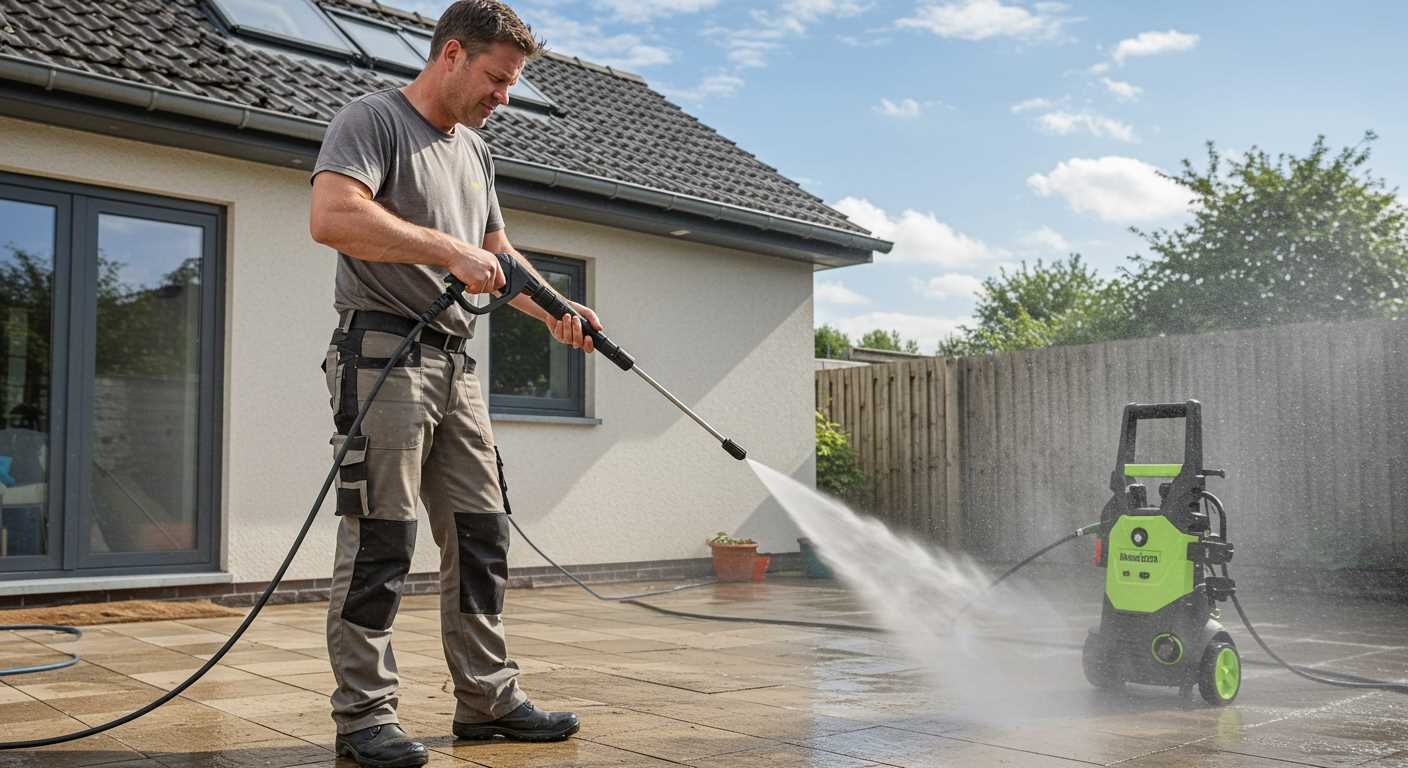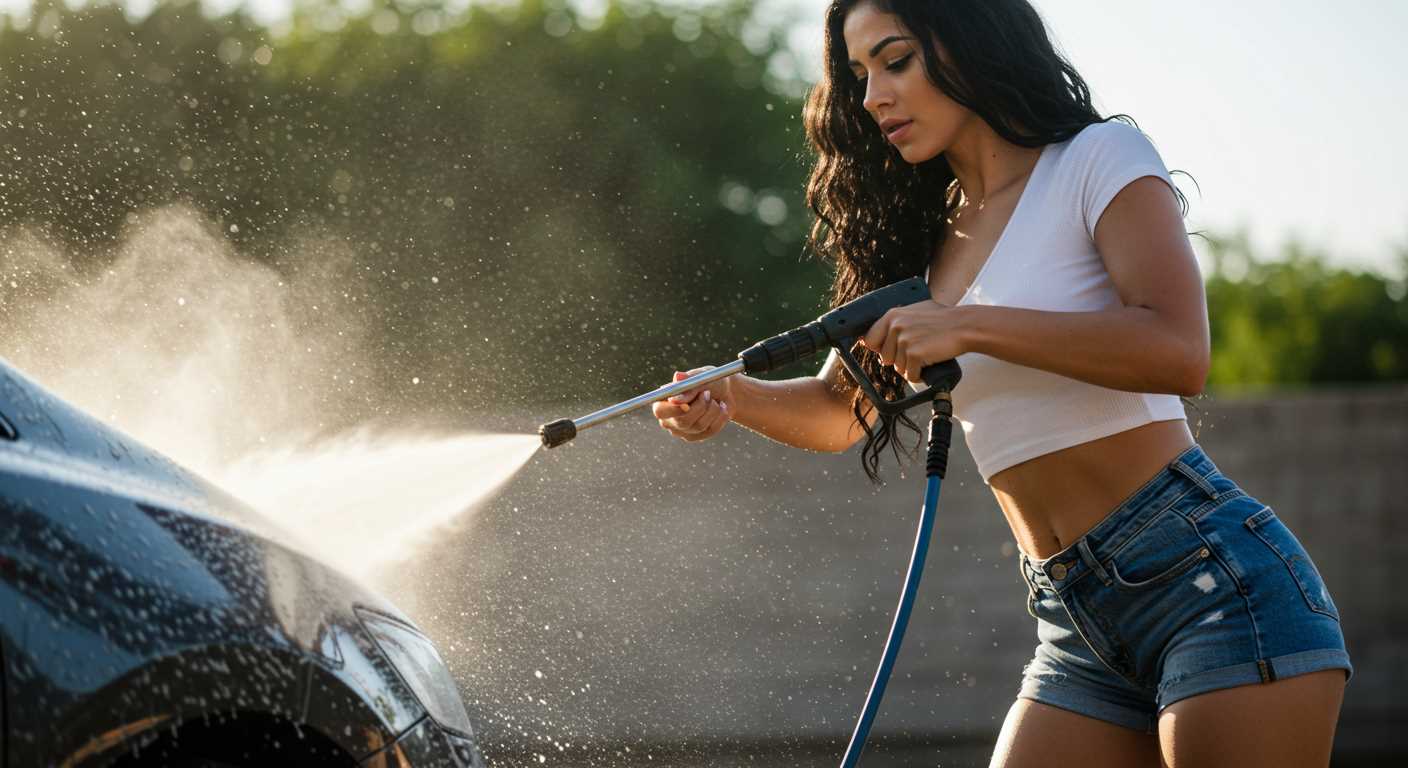


Start with a mixture of warm water and mild detergent. Apply it liberally with a soft brush, ensuring you agitate the surface gently. This initial step can lift some of the lighter discolourations without damaging the timber.
If the stains persist, consider using a solution of oxalic acid, which is particularly effective for handling darker blemishes. Follow the manufacturer’s instructions carefully, as concentrations may vary. It’s wise to test a small, inconspicuous area first to ensure compatibility with your surface.
After treatment, rinse the area thoroughly with clean water to remove any chemical residues. Allow the timber to dry completely before proceeding to the next stage.
For a final touch, lightly sand the affected areas with fine-grit sandpaper. This can help blend the treated sections with the surrounding wood, restoring a uniform appearance. Be sure to follow the grain of the timber to avoid further damage.
Finally, apply a protective sealant to safeguard against future staining. Regular maintenance will keep your outdoor space looking its best while prolonging the life of your timber surfaces.
Eliminating Residue from Wooden Surfaces
Begin by gathering a few supplies: fine-grit sandpaper, wood cleaner, and a soft-bristle brush. Start with the sandpaper, gently sanding the affected areas. This not only smooths the surface but also helps blend the discoloured spots with the surrounding wood. Use a light touch to avoid removing too much material.
Next, apply a specially formulated wood cleaner using the soft-bristle brush. This will help lift any remaining debris and restore the natural colour. Follow the manufacturer’s instructions for optimal results, ensuring thorough coverage. Rinse with clean water afterwards to remove any residue from the cleaner.
Once dry, consider applying a wood conditioner or sealant to protect the surface. This will also enhance the wood’s appearance, giving it a richer tone and better resistance to future damage. Regular maintenance with appropriate cleaners and protective coatings will help keep your outdoor space looking its best.
If the discolouration persists, you might need to use a wood brightener, which can help restore the original hue. Always test on a small, inconspicuous area first to ensure compatibility with your specific type of timber.
Assessing the Extent of Pressure Washer Damage
Begin by closely examining the surface for signs of distress. Look for areas where the finish has been stripped away, exposing bare timber. Discolouration often indicates that the high-intensity stream has penetrated deeper than the surface. Pay special attention to the edges and joints, as these areas typically bear the brunt of any cleaning process.
Visual Indicators to Consider
Check for uneven tones across the surface; lighter patches suggest overexposure while darker areas may indicate that moisture has been trapped beneath the fibres. You may also notice splintering or raised grain, which can occur when the water pressure is too high. Use a magnifying glass if needed to scrutinise for any small cracks or fissures that could worsen over time.
Testing for Damage
A simple water test can help assess the integrity of the timber. Sprinkle some water onto the surface. If it beads up and rolls off, the protective seal may still be intact. If the water soaks in, it’s a sign that the protective barrier has been compromised.
| Indicator | What It Means |
|---|---|
| Discolouration | Possible stripping of finish; requires refinishing. |
| Splintering | High pressure may have damaged the surface; may need sanding. |
| Moisture Absorption | Protective seal compromised; necessitates sealing. |
Document your findings with photos to track the extent of the damage. This can be useful for planning repairs or discussing options with a professional. By identifying the severity of the impact upfront, you can make informed decisions on the next steps to restore the surface.
Gathering Necessary Cleaning Supplies
Start with a high-quality wood cleaner specifically designed for outdoor surfaces. I’ve tested various brands, and one that consistently delivers results is a biodegradable option that’s tough on stains yet gentle on the environment. A solution containing oxalic acid is particularly effective for lightening discoloured areas.
Next, grab a stiff-bristled brush. I prefer ones with synthetic bristles as they hold up against tough scrubbing without damaging the surface. A brush with a long handle allows for better leverage, helping to reach those tricky spots without straining your back.
Don’t overlook a good pair of safety goggles and gloves. Protecting your eyes and skin while working with cleaning agents is crucial. I have learned the hard way that even mild chemicals can cause irritation.
A hose with a spray nozzle is invaluable for rinsing the surface after applying the cleaner. An adjustable nozzle lets you control the water pressure, making it easier to flush away residue without causing further damage.
If the damage is extensive, consider investing in a wood brightener. This product helps restore the natural colour of the timber, giving it a fresh appearance. I’ve found that applying it after cleaning brings out the best results.
Lastly, gather some clean rags or towels for drying the surface. It’s best to let the deck dry completely before applying any sealant or stain, which I’ve found makes a significant difference in the longevity of the finish.
Choosing the Right Wood Cleaner for Your Deck
Opt for a cleaner specifically formulated for timber surfaces. These products typically contain gentle yet effective ingredients that lift dirt without causing further harm. Look for biodegradable options to ensure environmental safety.
- Type of Cleaner: Select between liquid concentrates or ready-to-use sprays. Concentrates are often more economical, while sprays offer convenience.
- pH Balance: Aim for a neutral pH cleaner. Acidic or alkaline solutions can damage the fibres, leading to additional issues.
- Stain Removal: If your surface has discolouration, choose a cleaner with stain-fighting properties. Products containing oxalic acid are effective against tannin stains.
- Mould and Mildew Inhibitors: If your outdoor area is prone to dampness, opt for a cleaner that includes mould-fighting agents. This prevents future growth and maintains appearance.
During my years in the industry, I’ve seen the difference the right cleaner can make. I once worked with a homeowner who used a standard household cleaner on their timber patio. The result? A faded, uneven surface that required extensive restoration. Switching to a dedicated wood cleaner transformed their deck, bringing back its original luster.
Always read reviews and check for product certifications. Trustworthy brands often have customer testimonials highlighting their effectiveness. If you have the opportunity, sample a small area before committing to a full application. This ensures compatibility with your existing finish and avoids unexpected reactions.
Lastly, don’t underestimate the power of a good scrub. Pair your chosen cleaner with a stiff-bristled brush for the best results. Regular maintenance will keep your outdoor space looking its finest for years to come.
Testing Cleaning Solutions on a Small Area
Before applying any cleaning solution across the entire surface, I always recommend testing it on a small, inconspicuous area. This quick test reveals how the product interacts with the material and whether it causes any adverse reactions. Choose a spot that’s not easily visible, perhaps behind a potted plant or near the edge of the structure.
Apply the cleaner according to the manufacturer’s instructions. Wait for the time specified on the label, then rinse the area thoroughly with water. After drying, inspect the test spot for any discolouration, damage, or unwanted results. This step can save you from extensive repairs and additional costs down the line.
In my experience, I’ve often found that certain solutions work wonders on one type of finish but can be harsh on another. For instance, a biodegradable cleaner I tried once worked beautifully on one deck but left a cloudy residue on another. Take notes on your findings, as they can guide you in selecting the right treatment for the entire area.
Always have a few alternative products on hand, as the first choice may not yield the desired outcome. By conducting this initial test, you ensure that the approach you take is safe and effective, paving the way for a successful restoration process.
Applying the Cleaner with Proper Technique
First, always work in sections. I recommend dividing the surface into manageable areas, typically around 4×4 feet. This helps keep the cleaner wet during application, allowing it to penetrate effectively. Use a garden sprayer or a roller for even distribution. Avoid using a brush at this stage; it can create unwanted scratches on the surface.
Spray Technique

When spraying, maintain a distance of around 12 inches from the surface. This ensures a fine mist rather than a concentrated stream, which can cause additional damage. Start from one corner and move systematically across the area, overlapping your strokes slightly to prevent streaks. Allow the cleaner to sit as per the manufacturer’s instructions, usually around 10-15 minutes, but keep an eye on it; you don’t want it to dry out.
Agitation and Rinsing
After the dwell time, use a soft-bristle brush to gently agitate the cleaner, focusing on the areas with the most visible imperfections. This step is crucial; it helps lift discolouration and grime without harming the wood. Rinse thoroughly with clean water, aiming for a gentle spray to avoid additional abrasion. If possible, use a garden hose with a spray nozzle rather than a stronger source, as it provides better control.
After rinsing, let the surface dry completely before considering any further treatments like sealing or staining. This method not only addresses discolouration but also revitalises the wood’s natural appearance. Trust me, patience and attention to detail during this phase yield the best results. Keep your tools clean and ready for the next round, as maintaining them extends their life and effectiveness for future projects.
Using Sanding to Smooth Out Pressure Marks
If you’re dealing with deep impressions in your deck, sanding is an effective solution. Start with a coarse grit sandpaper, such as 60 or 80 grit, to tackle the most stubborn areas. Apply even pressure and move the sander in the direction of the wood grain to avoid creating new scratches.
After the initial pass, switch to a finer grit, like 120 or 150, to refine the surface. This will help create a smooth finish and prepare the wood for any protective treatments you might want to apply later. Take care to sand evenly across the entire area, ensuring that you don’t create dips or uneven surfaces.
For edges and corners, a sanding block or detail sander can be useful. These tools allow for precision in hard-to-reach spots, ensuring no area is overlooked. Keep an eye on the wood colour; if you notice lighter areas, you’ve likely sanded too deep and should adjust your technique.
After sanding, thoroughly clean the surface to remove all dust and debris. A vacuum is ideal for this task, followed by a damp cloth to catch any remaining particles. Once the surface is clean, it’s ready for refinishing. If you’re considering using an air compressor for drying purposes, check out this resource on the best air compressor for drying car.
Finally, always wear appropriate safety gear, including a dust mask and goggles, to protect yourself while sanding. This process not only restores the surface but also enhances the overall appearance of your outdoor space.
Sealing the Wood After Cleaning
After restoring your outdoor surface, applying a protective sealant is crucial for preserving its appearance and longevity. I recommend using a high-quality wood sealer that suits the type of timber on your patio. Here’s how to ensure optimal results:
- Choose the Right Sealant: Look for products specifically designed for exterior use. Options include penetrating oils, water-repellent sealers, and transparent stains. Each provides different levels of protection and finish.
- Check the Weather: Ensure the forecast is clear for a couple of days. Apply the sealer when temperatures are mild, avoiding rainy or overly humid conditions to allow proper drying.
- Prepare the Surface: Make sure the area is completely dry and free of debris. Any remaining dust or moisture can affect adhesion and result in an uneven finish.
- Application Technique: Use a brush or roller for even coverage. I prefer brushes for corners and edges, ensuring every nook is sealed. Follow the manufacturer’s instructions regarding application thickness.
- Multiple Coats: Depending on the product, applying a second coat after the first has dried can enhance protection. Always refer to the instructions for drying times between coats.
- Regular Maintenance: Keep an eye on the finish. Depending on exposure to the elements, reapplication may be needed every couple of years. This helps maintain the timber’s health and appearance.
During my years in the cleaning industry, I’ve seen decks transformed into stunning outdoor spaces simply by investing in proper sealing. A well-sealed surface not only looks appealing but also resists fading and damage, ensuring your labour pays off in the long run.
Maintaining Your Deck to Prevent Future Marks
Regular upkeep is key to keeping your outdoor surface looking pristine. Begin with a thorough inspection every few months. Check for signs of wear, such as splintering or discolouration, which can indicate areas needing attention. If you spot these issues early, you can avoid more extensive damage down the line.
Applying a high-quality sealant every couple of years creates a protective barrier against moisture and UV rays. This not only enhances the wood’s appearance but also prevents future issues. I recall a time when I neglected to seal my own patio; within a year, the wood had absorbed water, leading to unsightly stains and warping.
Invest in a reliable cleaner specifically designed for outdoor surfaces. These products often contain ingredients that lift dirt and grime without damaging the wood. I’ve found that using a pressure washer nozzle for car washing can be beneficial for gentle cleaning without causing harm.
Regularly sweep away debris and leaves to prevent moisture retention, which can lead to mould and mildew. After heavy rains or storms, ensure your deck dries out properly. If water pools in certain areas, consider adjusting the slope of the surface or improving drainage.
In summer months, protect your deck from intense sunlight by using an outdoor umbrella or patio cover. This simple measure can significantly reduce the risk of fading and cracking. Lastly, consider using furniture pads beneath any heavy outdoor furniture to avoid indentations or scratches. Small actions can save you from larger headaches in the future.


.jpg)

.jpg)


